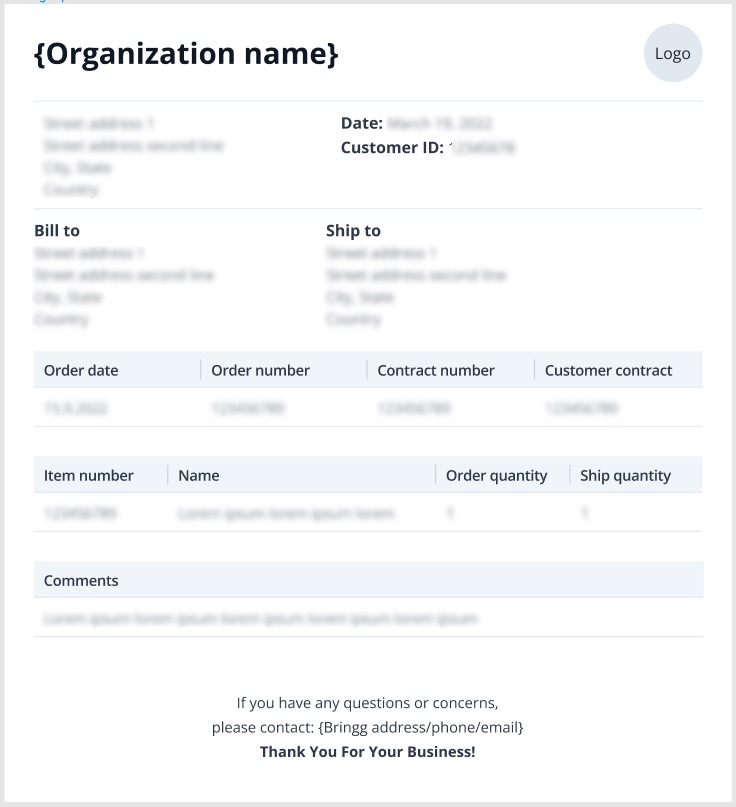- 07 Aug 2023
- 2 Minutes to read
- Print
- DarkLight
About Documents and Printing
- Updated on 07 Aug 2023
- 2 Minutes to read
- Print
- DarkLight
Documentation and printing are made simple in Delivery Hub. After a quick setup, you can automatically send packing slips and shipping labels to your printers, generate commercial invoices, and prepare return labels.
Let's start with a few definitions:
Packing slips
Use packing slips to tell your packers which inventory items are intended for each package. In addition to a list of inventory included in the package, packing slips also include the address of the shipping location date, customer ID, order number, and billing and shipping addresses.
Customers can then check to make sure all listed items have arrived.
You can customize packing slips with your company name and logo, and set up automatic printing to send the slips directly to a designated printer.

Shipping labels
Shipping labels provide all the information carriers need to ship a package to the correct address, such as the service level, tracking number, and package weight. They also include vital information for carriers, such as if included items are fragile or dangerous.
Some carriers provide shipping labels for each package, which are automatically added to a shipment's documentation and printed when a packer selects Book and Print.
Return labels
When you create and enable Return Rules, Delivery Hub automatically prints return labels for each shipment with all the attributes required to trigger a rule. The return label includes all the information that the customer needs to initiate the return, as well as the return location and service level for the carrier to return the inventory to the correct location.
Commercial invoices
Delivery Hub automatically generates commercial invoices for international shipments, which are required for the export and import clearance process. The requirements for commercial invoices may change depending on the export and import country, but in general they include the following:
- A harmonized code, which is an 8-digit code that represents a globally recognized description of goods. Harmonized codes are required for each package shipped internationally.
- The total value of the goods being shipped
- List and description of goods
- Country of manufacture
- Terms of sale, such as gift or replacement part, which are listed per order and used for tax clearance
- Shipment information
- Reason of export
Printer Types
Carriers generally provide labels that print on thermal or laser printers.
| Printer type | Common print size | File types |
|---|---|---|
| Laser | 8.5x11 or A4 | |
| Thermal | 4x6 in. | .ZPL, .ZPLII, .ZPL2, .EPL, .EPLII .EPL2. |
Some carriers provide image file types such as .PNG and .JPG. The Bringg printer app does not support these file types.

